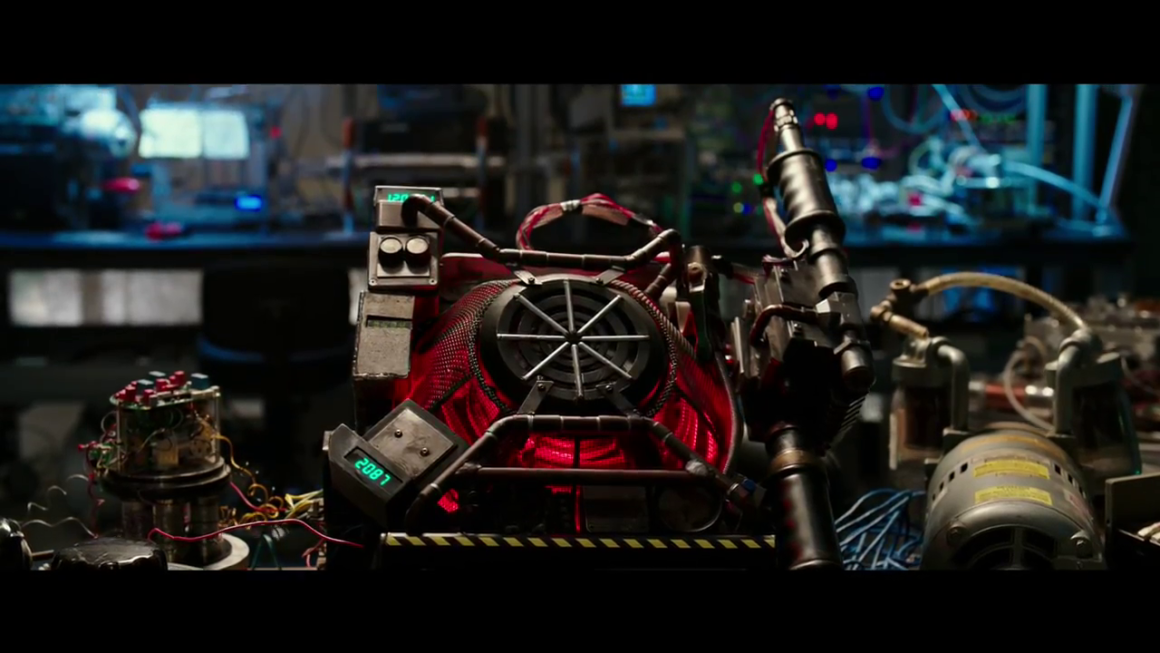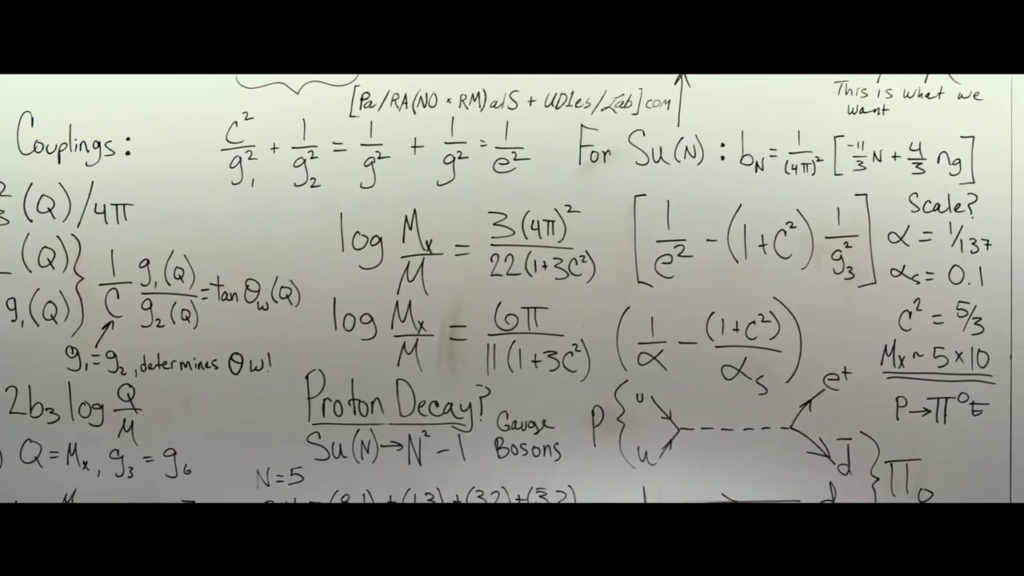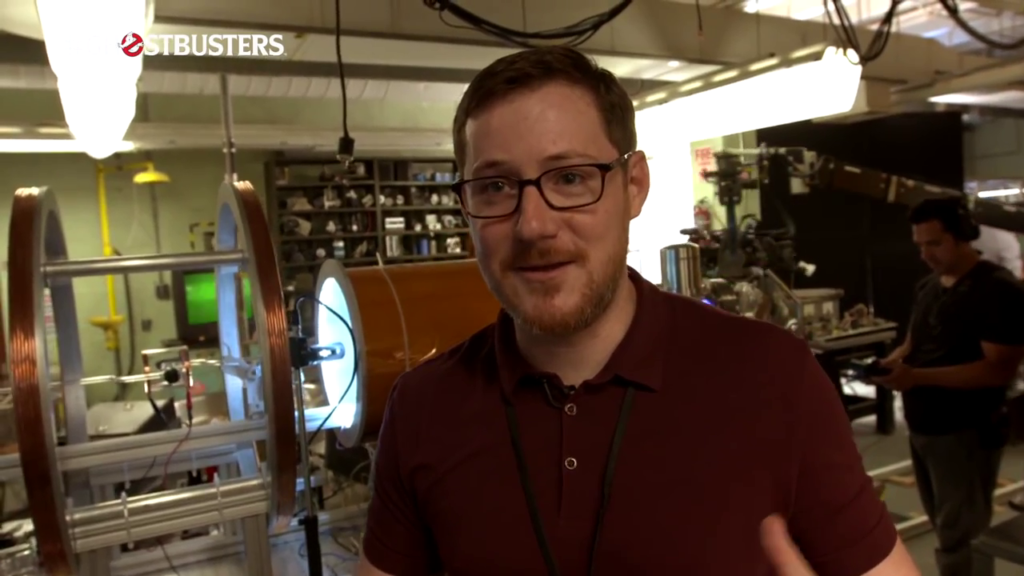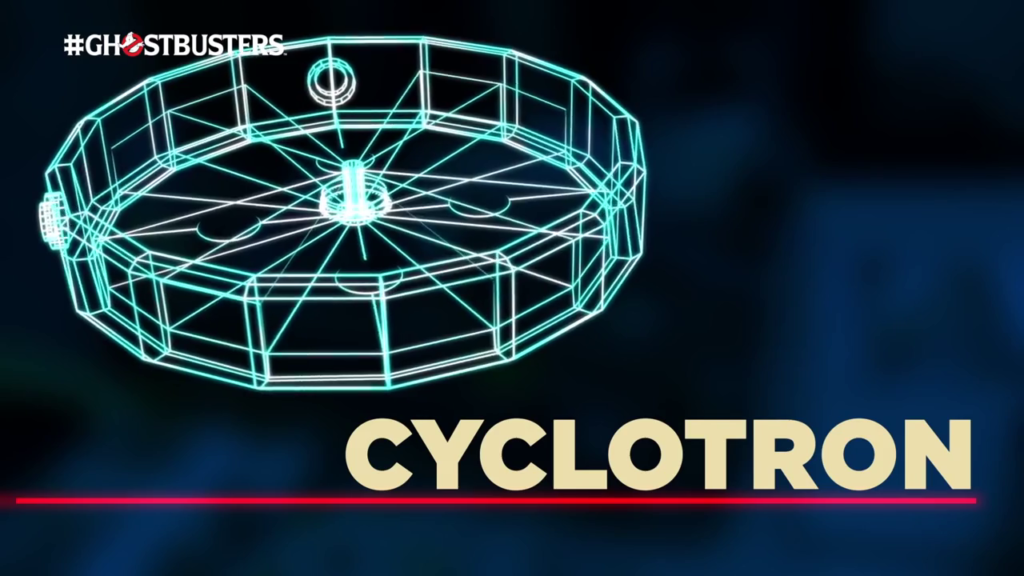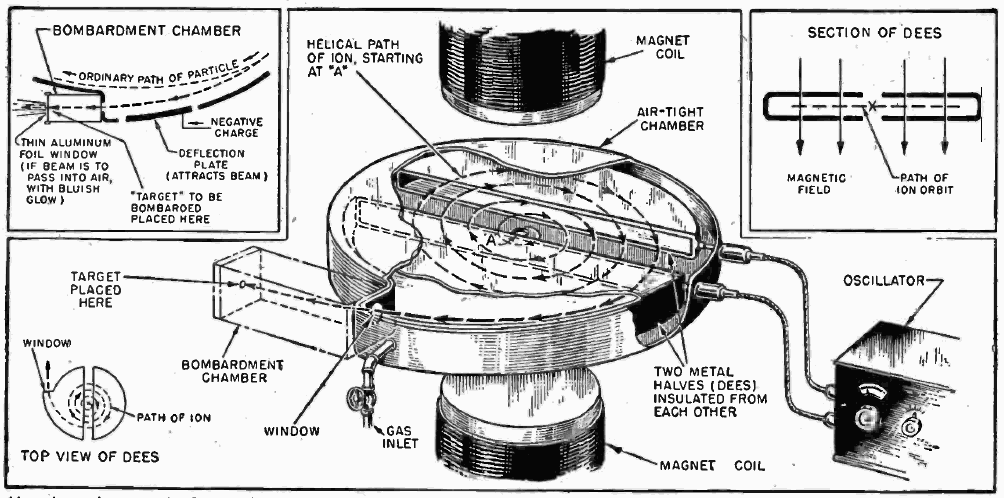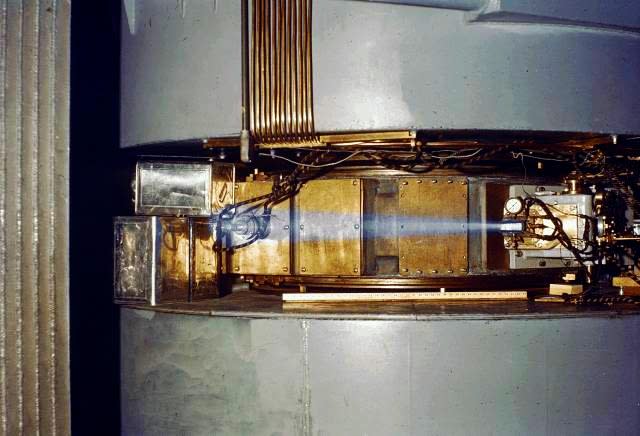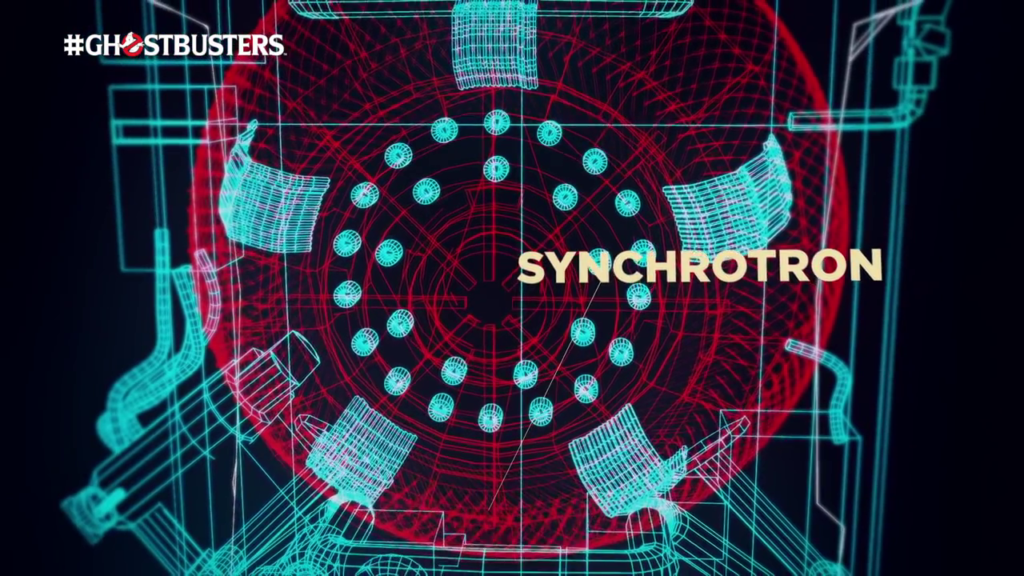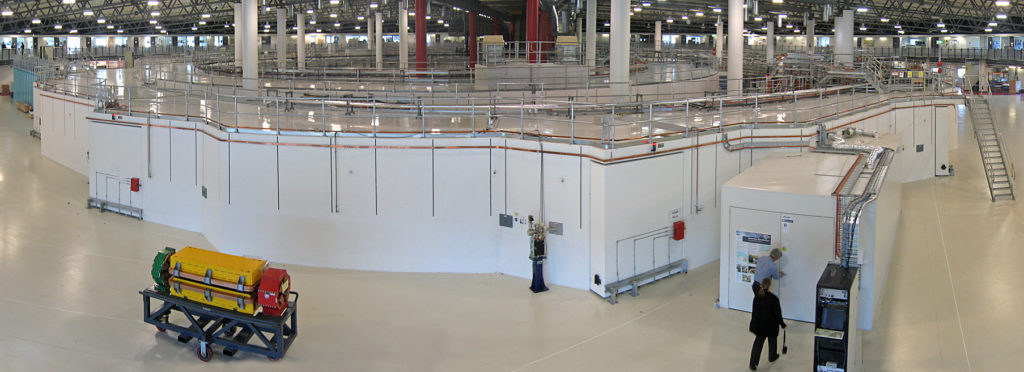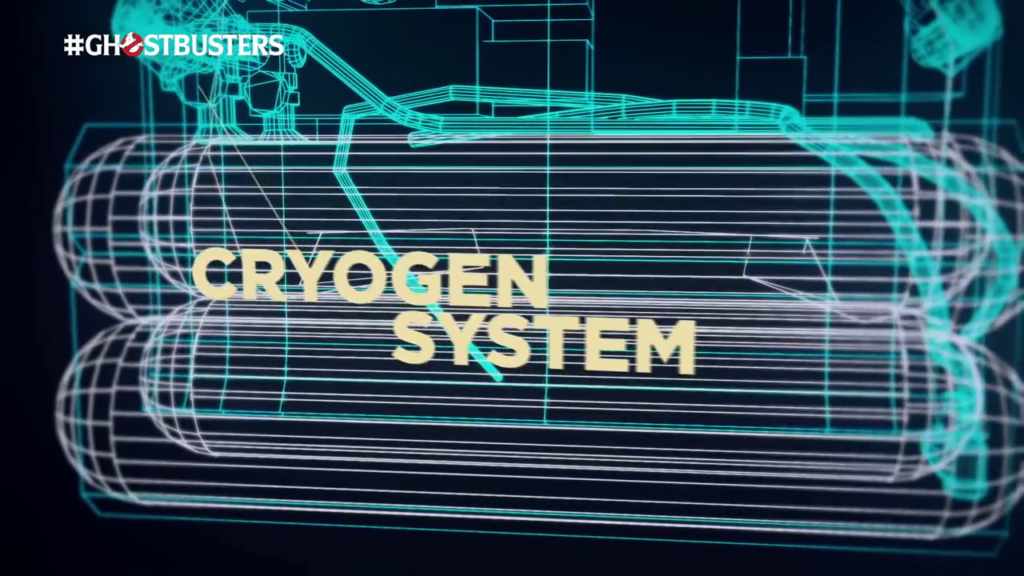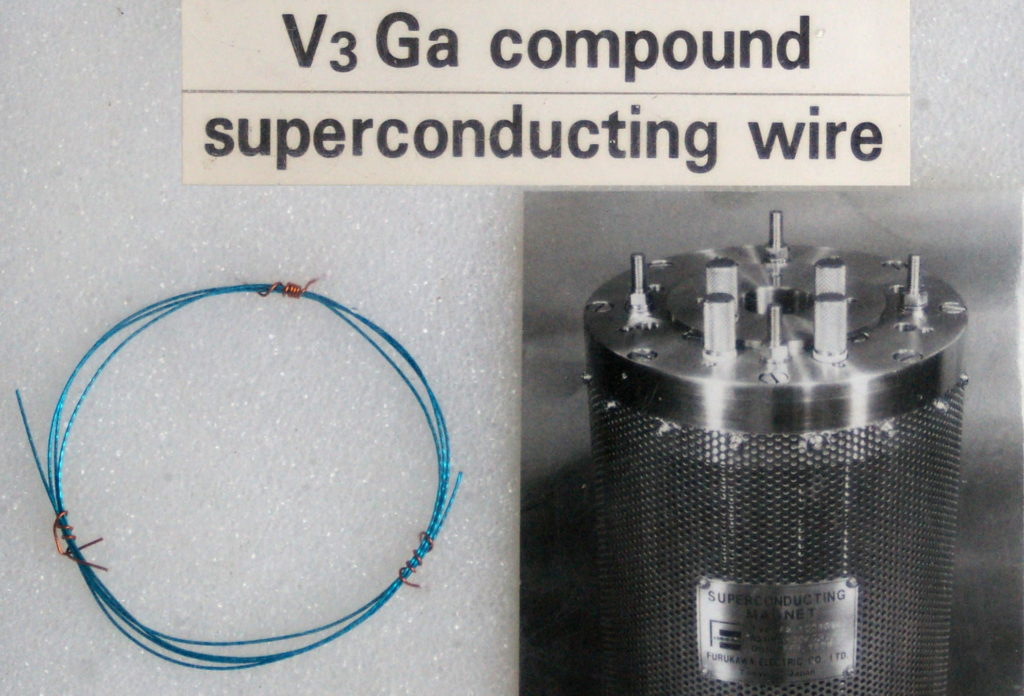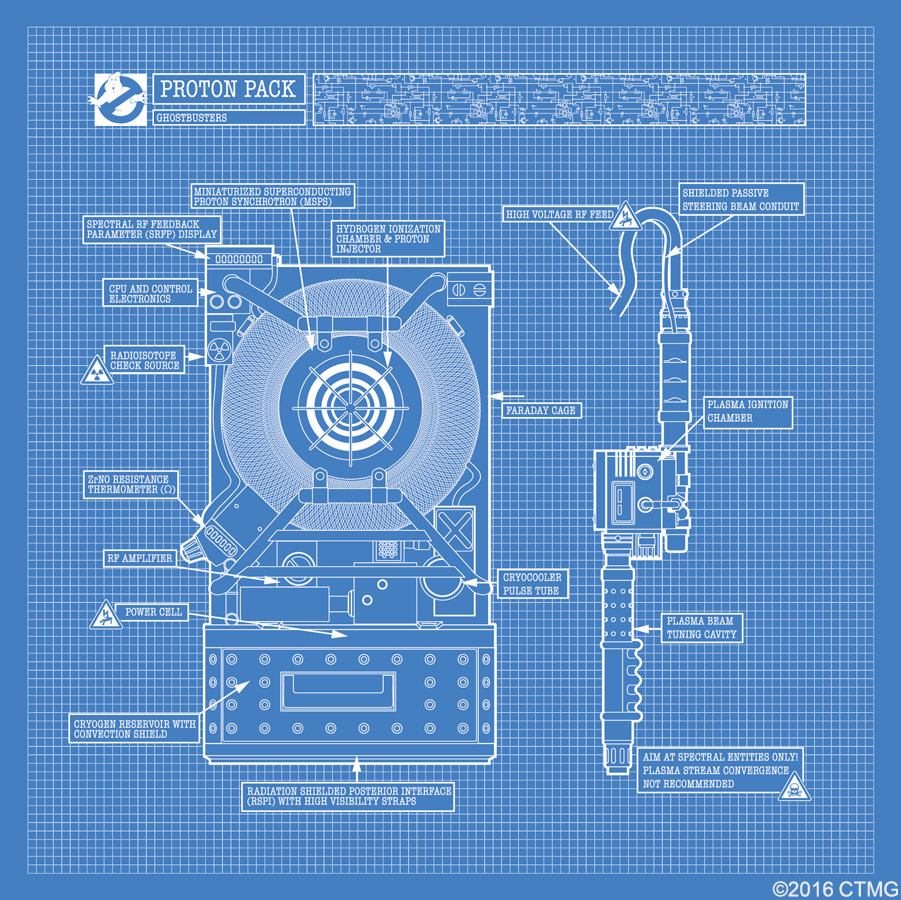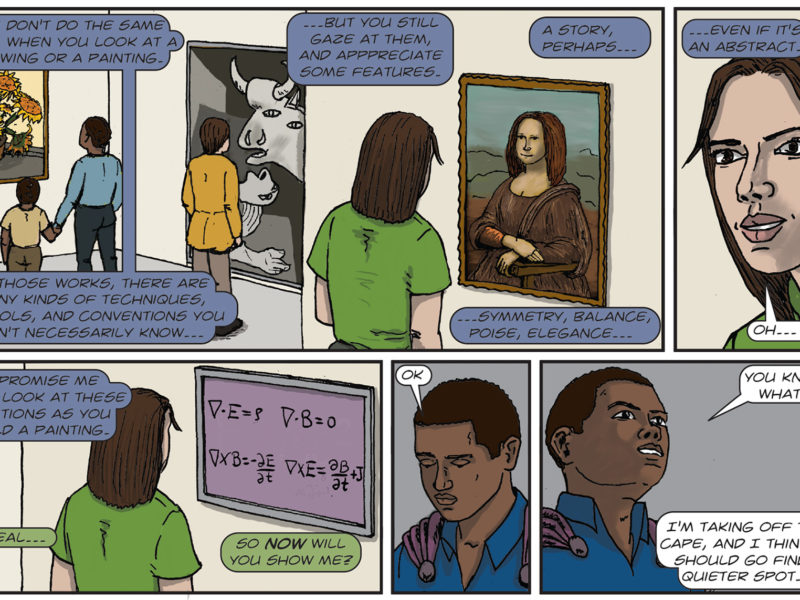The Ghostbusters trailer contains an Easter egg hidden in the whiteboard filled with physics equations. This Easter egg goes by quickly but if you pause at just the right moment, you will see one "equation" on top is a URL that spells paranormalstudieslab.com. Fans will recognize this is a nod to the original movie as The Paranormal Studies Lab was the name of the laboratory run by Dr. Peter Venkman (Bill Murray) at Columbia University.
Eagle-eye fans who managed to pick up on this and visit the URL will come across a hidden web page on the physics of the Proton Pack, as explained by MIT particle physicist, James Maxwell. James curiously shares a name with James Clerk Maxwell, the Scottish physicist famous for formulating the laws of electromagnetism. The laws of electromagnetism and special relativity play an important part in the physics of the proton pack.
In practical terms, the Proton Pack is a miniature particle accelerator that ensnares negatively charged ectoplasmic entities inside a positively-charged proton beam. The term "proton pack" is not used in the original movie at all — it was originally described as a positron collider. It was not until the subway tunnel scene in the second movie that the word is actually used. So, let's take a look at the physics behind the Proton Pack and see whether it is possible to build one.
The Original Proton Pack: The Cyclotron
As Maxwell points out, the original Ghostbusters Proton Pack, as designed by Dr. Egon Spengler (Harold Ramis), was a cyclotron. This was one of the earliest types of particle accelerators ever developed. The device invented by Ernest O. Lawrence in 1932 works by accelerating charged particles along a spiral path. Back then, cyclotrons were the most powerful particle accelerators around until they were replaced by the more advanced synchrotrons back in the 1950s though they are still used today in the first stage of some particle accelerators.
Inside the cyclotron, a charged particle is injected into the middle of the chamber where it is accelerated between two D-shaped electrodes or "dees." In the case of the Ghostbusters' Proton Pack, that charged particle is a positron or positively charged electron. The magnetic field passing through the dees bends the particle's path, making it travel in a circle, while the electric field between the dees accelerates the particle, giving it a "kick" to make it go faster. When the positron beam has enough energy, it strikes a metal target to release a beam of protons.
The kick the particle gets from the electric field is very similar to a parent pushing a child on a swing. If a parent times the push at just the right moment, the child gains more energy and swings higher and higher. Instead of having one parent pushing from behind, there is also an adult in front who pushes in the opposite direction. If that parent in front also pushes at the right moment (and does not get hit in the face), the child will gain more energy and continue to swing higher and higher with each push.
Just as the child on the swing in our example gets two pushes, the positron gets two kicks. It gets one kick as it passes through the gap but as it circles back and passes through the dee in the opposite direction, the electric field switches direction to give it another kick. This was a significant advance over previous particle accelerators. Previous accelerators, or linacs, just accelerated particles along straight lines. Inside the cyclotron, the magnetic field bends the beam, making it curve back on itself so it could pass through the gap where it could be accelerated multiple times. As the particle gains more energy, it spirals outward.
When the particles reach the rim, they exit the dees through a small gap to hit a metal target located at some point beyond the rim of the chamber. This creates secondary particles, in this case protons (the positively charged partice found in the nucleus of an atom), which may be guided outside of the cyclotron and into instruments for analysis.
Proton beams look nothing like in the movie. Proton beams are (usually) collimated, i.e., they travel in straight lines. In the movies, they are seen to whip about and undulate wildly; this is probably done for visual effect.
Proton Pack Upgrade: The Synchrotron
The size of the accelerator is not the only practical consideration. As the positron spirals outward, it needs to sync up with each "kick," or the cyclotron resonant frequency. This is the time it takes for the particle to complete a circle and depends on the strength of the magnetic field, the electric charge, and its mass.
If the particles go fast enough to approach light speed, its mass increases as relativistic effects come into play. This changes the cyclotron resonance and the beam goes out of phase with the oscillating electric field — the particle beam no longer gets the kicks at the right time. The classical cyclotron is therefore only capable of accelerating particles up to a few percent of the speed of light.
To get even higher energy particles, the synchrotron solves this problem by varying the strength of the magnetic field. As the speed increases so too does the magnetic field. Instead of moving out in a spiral, the changing magnetic field exerts a greater centripetal force on thfaster-movingng particle to keep it along the same circular path.
This means that the Proton Pack seen in the reboot is a far more powerful accelerator (Go, Erin!) but the science does not stop there. To make all this possible, the Ghostbusters have to find a way to generate the much stronger magnetic fields needed to keep a charged particle moving in a circular path about the size of a back pack. To do this, they turn to superconductors and cryogen systems to generate these magnetic fields.
And Powerful Magnet to keep it Compact

To get the intense magnetic fields to make a synchrotron work, the Proton Pack uses superconduting magnets. The resistance of all metals becomes lower as they as cooled but superconductors are special. At a certain critical temperature, their resistace falls to zero. This means that an electric current flowing through a loop of superconducting wire can persist indefinitely with no power source. This allows superconductors to handle much larger currents than metallic conductors to produce more intense magnetic fields.
To achieve this, superconducting magnets need to be kept cold, at cryognic temperatures. The new Proton Pack needs a cryogen system, possibly using liquid Helium to keep the superconductors at approximately minus 269.15 degrees Celsius or minus 452.47 Fahrenheit. This keeps the superconductors at the temperatures they need to be to handle the large currents needed to generate the intense magentic fields for the synchrotron.
Crossing Streams: Does the Science Measure Up?

In an interview, Maxwell said that the movie's director Paul Feig made a lot of effort to make the science in Ghostbusters seem as realistic as possible, as we can see from the Proton Pack's blueprints. Maxwell points out in the video that, while the science behind the Proton Pack is sound, there are limitations. For one, it's not possible to actually build a synchrotron particle accelerator into an actual back pack. The technical considerations, e.g., getting the intense magnetic fields to make things work, are not practical.
One of the interesting challenges as one of the show's science advisers was figuring how actual science and technology could influence the prop design. As a fan of the original Ghostbusters, he admitted that seeing scientists play the role of heroes, and saving the day, was one of the things that piqued his interest in the sciences as a child. Hopefully, layering real physics into an awesome science based ghost-fighting weapon will do the same when the new Ghostbusters comes out, and capture a new generation of scientists like it did James Maxwell.

